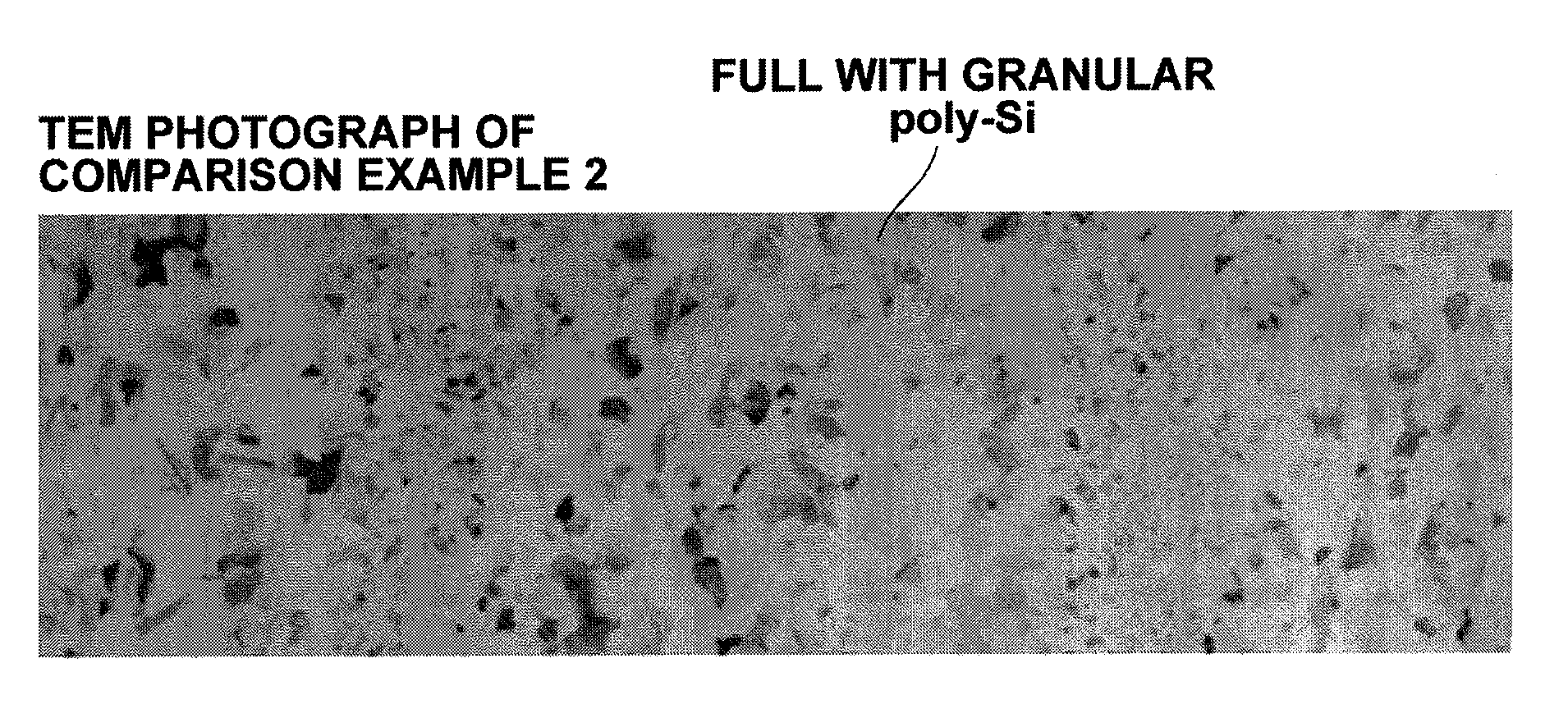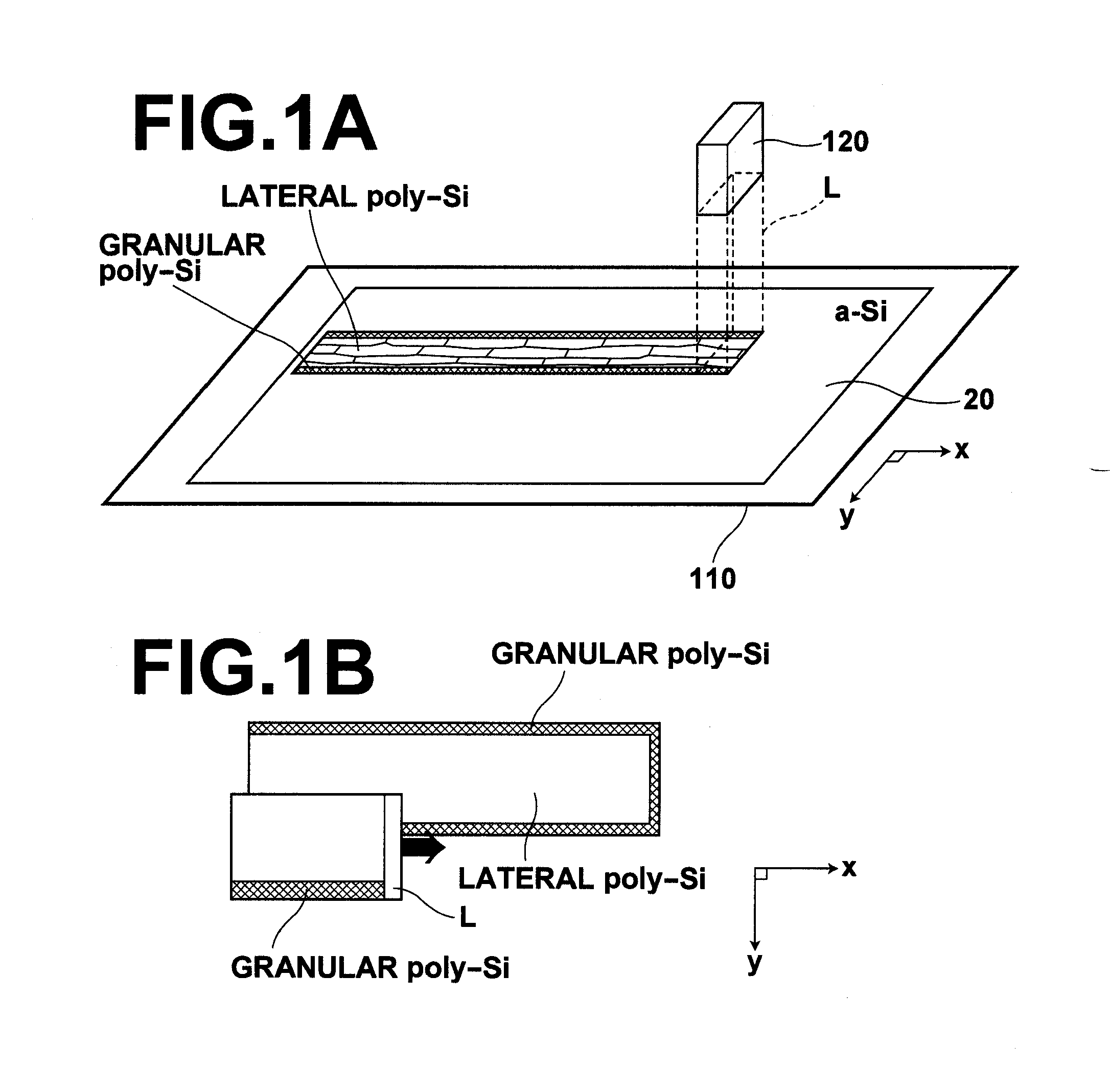Process and system for laser annealing and laser-annealed semiconductor film
- Summary
- Abstract
- Description
- Claims
- Application Information
AI Technical Summary
Benefits of technology
Problems solved by technology
Method used
Image
Examples
concrete example 1
[0208] A concrete example 1 of the semiconductor film according to the present invention has been produced in accordance with the following procedure.
[0209] A bedding layer of silicon oxide having a thickness of 20 nm and a noncrystalline silicon (a—Si) film having a thickness of 50 nm are formed in this order on a glass substrate by plasma CVD. Thereafter, heat annealing is performed at approximately 500° C. for approximately 10 minutes, and dehydrogenation of the noncrystalline silicon film is performed.
[0210] Next, laser annealing of the noncrystalline silicon film is performed by using the laser annealing system 100 as illustrated in FIGS. 10 and 11, where GaN-based semiconductor lasers having the oscillation wavelength of 405 nm are used in the laser-light source, and the laser beam L has an elongated rectangular cross section with the dimensions of 20×3 micrometers at the surface of the noncrystalline silicon film. The noncrystalline silicon film has been substantially entir...
PUM
 Login to View More
Login to View More Abstract
Description
Claims
Application Information
 Login to View More
Login to View More - R&D
- Intellectual Property
- Life Sciences
- Materials
- Tech Scout
- Unparalleled Data Quality
- Higher Quality Content
- 60% Fewer Hallucinations
Browse by: Latest US Patents, China's latest patents, Technical Efficacy Thesaurus, Application Domain, Technology Topic, Popular Technical Reports.
© 2025 PatSnap. All rights reserved.Legal|Privacy policy|Modern Slavery Act Transparency Statement|Sitemap|About US| Contact US: help@patsnap.com



